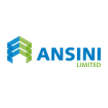
CNC machining is much safer than traditional machining. What’s more, its safety is improving all the time. With that said, however, CNC machining remains a dangerous activity. It’s therefore vital to know and follow the correct safety precautions.
To explain further, General Manager of Ansini; Nick Mills shares his insight into how industries can stay safe whilst using CNC machining equipment.
Understand the hazards
In the context of CNC machining, most hazards can be grouped into one of three categories. These are mechanical hazards, health hazards and environmental hazards.
Mechanical hazards relate to the machine itself. Health hazards relate to the way certain working practices could trigger adverse reactions. Environmental hazards relate to the state of the broader workplace rather than just the CNC machines themselves.
Avoiding mechanical hazards
The key to avoiding all mechanical hazards can be summed up as follows. Always operate the CNC machine in the advised manner. Of course, this means that you need to know the correct manner. In other words, you need to check the manufacturer’s instructions and make sure that you understand them. Usually, they are very clear but if there you do have questions, it’s better to ask than to guess.
While each CNC machine will have its own instructions, there are three factors that create a significant percentage of health-and-safety issues related to mechanical hazards. The first of these is cleanliness or lack thereof. Dirt often causes machines to heat up. The heat can reach the point where it can lead to burns. Dirt can also cause machines to behave erratically.
The second is switching out the manufacturer’s recommended tools. This is sometimes done as a way to save money. It may also be done to save time if proper supplies run out. In both cases, it’s a false economy. What’s more, it creates a health-and-safety hazard and leaves you with no comeback if anything does go wrong. It will probably invalidate both your manufacturer’s warranty and your insurance.
The third is using the machine without engaging all the safety protection. Working the machine with the door still open is particularly dangerous. That’s exactly why modern CNC machines increasingly come with safety interlocks which make it impossible to open the door while the machine is still working. Never try to bypass these.
Avoiding health hazards
There are three keys to avoiding health hazards, these are proper storage of materials, proper training in handling techniques and appropriate PPE. In principle, both proper storage of materials and proper training in handling techniques are an employer’s responsibility.
In practice, if you feel that your employer is failing to implement effective health-and-safety practices, then it’s your responsibility to voice your concerns. In particular, if you’re not confident that you’ve fully absorbed any training you’ve received, then it’s your responsibility to let your employer know and let them decide what to do.
On a similar note, it’s your employer’s responsibility to provide you with appropriate PPE and, if necessary, train you on how to use it. It is, however, your responsibility to use it as instructed. It’s also your responsibility to alert your employer to any issues with it and to make them aware if you feel that you need further training to use it properly.
Avoiding environmental hazards
The key to avoiding environmental hazards is to keep health and safety at the forefront of all decisions regarding workplace organization. Again, this is largely your employer’s responsibility. As before, however, it is your responsibility to alert your employer to any potential issues you see.
It is also your responsibility to dress and groom yourself appropriately for your work environment. Your employer will probably offer guidance on this. In general, however, you should wear protective footwear with good grip, clothes which fit close to the body and no jewellery. Long hair should be tied back.






Comments
There are no comments for this story
Be the first to respond and start the conversation.